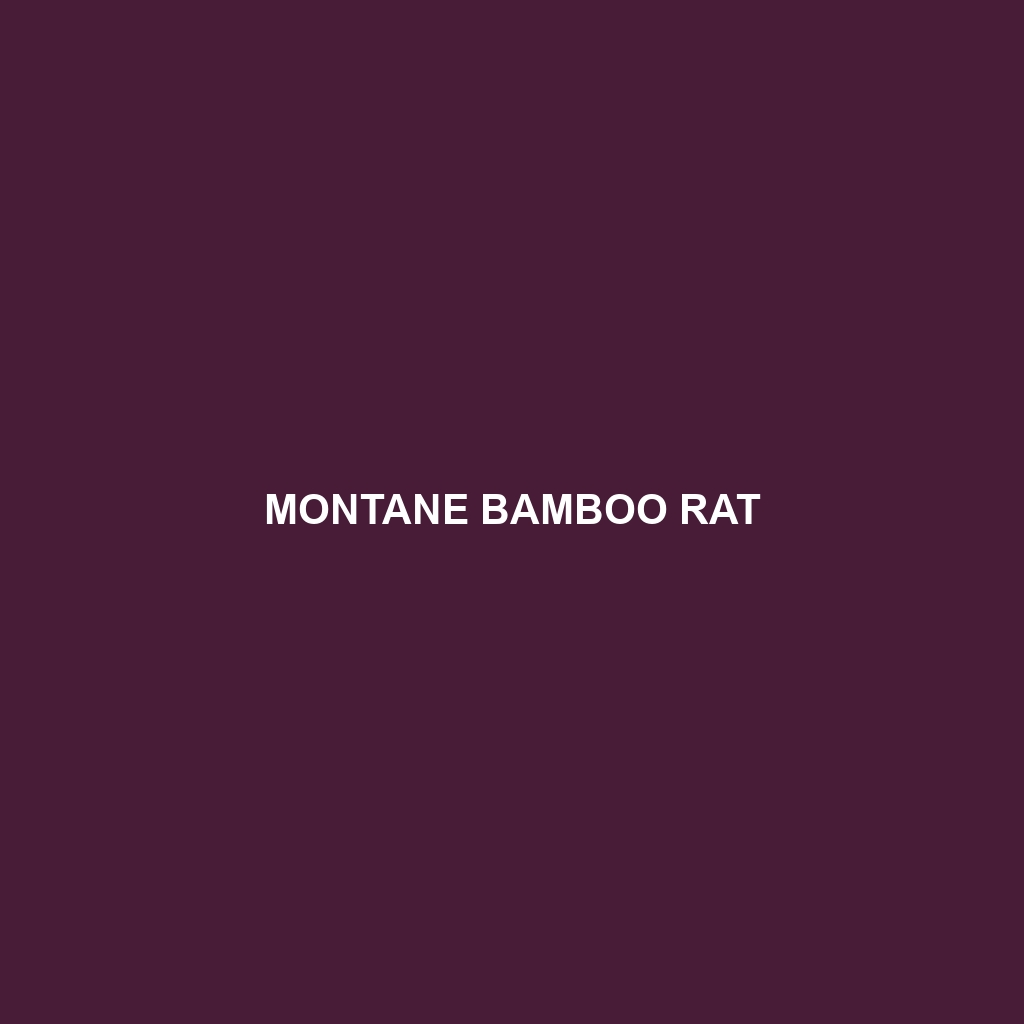Montane Bamboo Rat Overview
Common Name: Montane Bamboo Rat
Scientific Name: Rhizomys pruinosus
Habitat
The Montane Bamboo Rat, native to the mountainous regions of Southeast Asia, is primarily found in countries such as Myanmar, Thailand, and parts of Vietnam. This species thrives in areas characterized by dense bamboo forests, where high humidity and temperate climates provide the ideal environment for its survival. These rats typically inhabit elevations between 1,200 to 3,000 meters above sea level, where they burrow in soft, well-drained soil.
Physical Characteristics
The Montane Bamboo Rat is moderately sized, generally measuring between 30 to 50 centimeters in body length, with a long, hairy tail that can add an additional 20 to 25 centimeters to its total length. Its fur color ranges from dark brown to grayish, with a distinctive softer underbelly. Notably, the species features a robust body and a broad head equipped with strong incisors that are well-adapted for gnawing bamboo.
Behavior
Montane Bamboo Rats are primarily nocturnal and exhibit a terrestrial lifestyle, often foraging for food at night. They are known for their extensive burrowing behavior, creating complex tunnel systems beneath the earth which serve as protection from predators. These rodents are social animals, often found in small family groups, and engage in mutual grooming to strengthen social bonds.
Diet
The diet of the Montane Bamboo Rat consists mainly of bamboo shoots and leaves, making them herbivorous. They also feed on various roots, fruits, and other plant materials when bamboo is less available. Their feeding habits not only contribute to their survival but also play a role in the regeneration of their habitat.
Reproduction
Montane Bamboo Rats typically breed during the wet season, with gestation lasting around 30 days. A litter usually consists of 2 to 4 offspring, which are born blind and hairless but develop quickly. Parental care is significant, with both parents participating in nurturing the young, teaching them essential survival skills.
Conservation Status
The Montane Bamboo Rat is currently classified as vulnerable due to habitat loss from deforestation and agricultural expansion. Conservation efforts are underway to protect its natural habitat and mitigate the threats posed by human activities.
Interesting Facts
One fascinating aspect of the Montane Bamboo Rat is its ability to detect environmental changes, which helps in locating food and avoiding predators. Additionally, they are known to have a long lifespan compared to other rodent species, typically living up to 5 years in the wild.
Role in Ecosystem
In its ecosystem, the Montane Bamboo Rat plays a crucial role in seed dispersal and plant regeneration. By feeding on bamboo and other vegetation, it contributes to the health of its habitat, promoting the growth of new plants and providing food resources for various predators.
